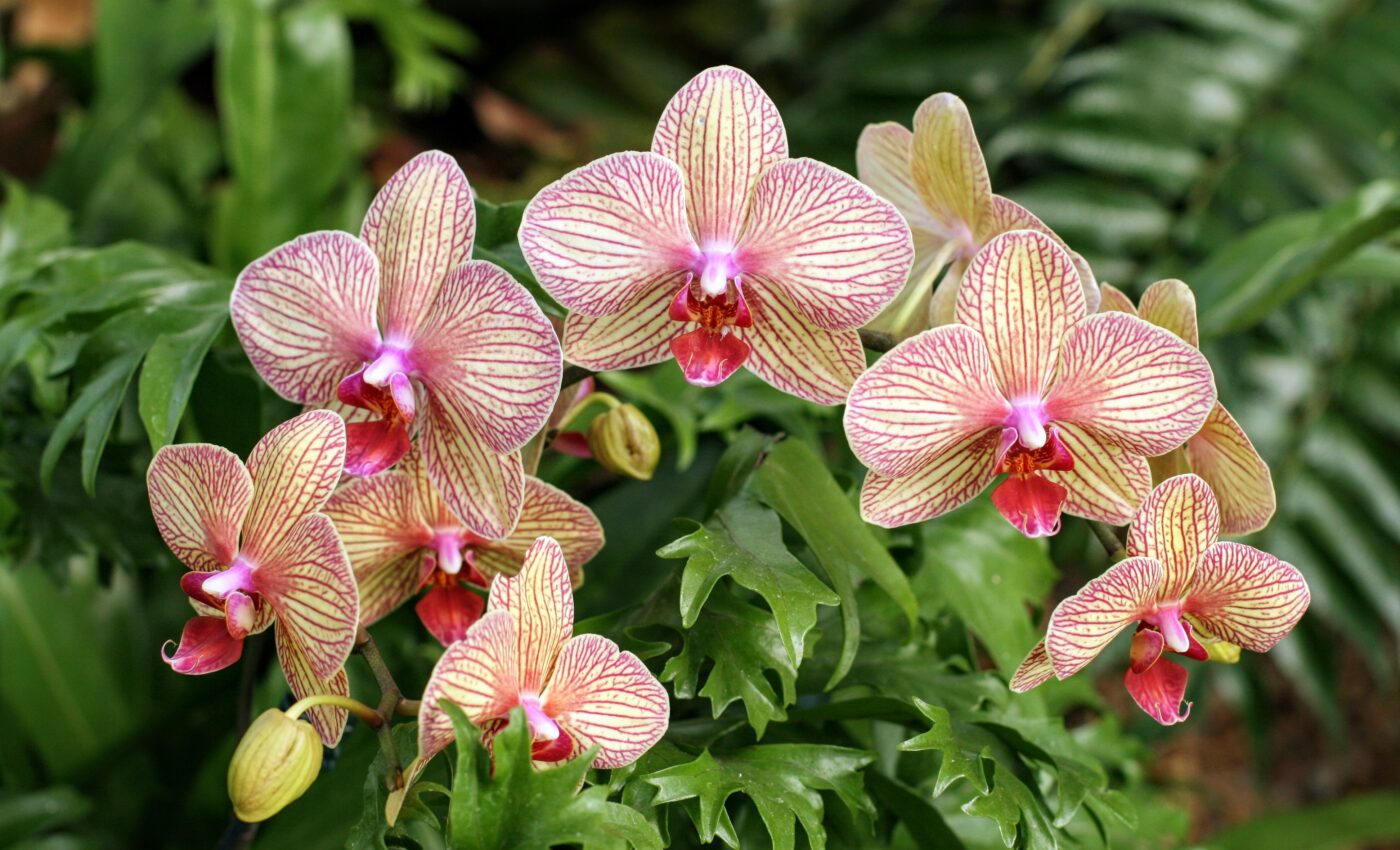
Despite their incredible adaptability, orchids are disappearing
Orchids are one of the oldest families of flowering plants, with fossil evidence suggesting that they have been around for at least 80 to 100 million years. This timeline places them in the Cretaceous period, meaning they coexisted with dinosaurs.
The longevity and evolutionary success of orchids are attributed to their remarkable adaptability and symbiotic relationships with pollinators and fungi, allowing them to colonize a wide range of habitats across the world.
Recent discoveries by researchers at the Royal Botanic Gardens have shed light on the orchids’ ancient origins and the ingenious strategies they employ to flourish worldwide. The study authors hope their findings will help inform conservation planning to protect orchids, many of which are disappearing at an alarming rate.
Orchid evolution
The study involved collecting different samples of the vast orchid family. Study co-author Dr. Natalia Przelomska is a lecturer at the University of Portsmouth.
“I had the privilege of extracting DNA from field samples ranging from those recently collected by multiple field botanists involved in this research, going back to botanists such as A.C. Maingay and E.L. Ekman, who were exploring the Old-World tropics and Neotropics in the 19th and 20th centuries,” said Dr. Przelomska.
Advanced techniques
The team used two advanced techniques to study the history of orchids: a newer method called high-throughput sequencing and a traditional method called Sanger sequencing.
Combining these techniques allowed the experts to create a detailed map of the orchid family’s genes. The goal was to build a family tree showing how these species evolved over time.
A very long legacy
The study suggests that orchids are ancient survivors, rooted in the time of dinosaurs. Imagine Earth millions of years ago, ruled by giants like Tyrannosaurus Rex and Triceratops. In the shadows, under the leaves and branches, the first orchids sprouted and thrived.
This time was a big turning point for Earth. Everything changed, including the climate, which eventually led to the end of dinosaurs and the rise of mammals. But through it all, the orchids kept going, slowly changing into the many types we know today. The findings emphasize how tough and adaptable these flowers are.
Survival tricks
The orchid family, with over 25,000 members, is a stunning example of evolution and adaptation in the plant world.
When orchid populations get separated by mountains, rivers, or other barriers, they experience different pressures and mutations. This “moving apart” process, called allopatric speciation, can lead to the birth of entirely new orchid species. The wind helps by carrying orchid seeds far and wide, creating opportunities for isolation and evolution.
Even without moving apart, orchids can evolve new species within the same habitat. This “staying together” process, called sympatric speciation, often happens when orchids attract different pollinators with unique flower shapes or smells. This selective mating prevents them from mixing with relatives, paving the way for new species.
From steamy rainforests to dry deserts, orchids have conquered it all. This incredible adaptability is partly thanks to their partnership with fungi (mycorrhizae) that help them get nutrients from the soil.
Fascinating reproductive strategies
Orchids have a unique relationship with pollinators. A pollinator is an animal that carries pollen from one flower to another, helping plants reproduce and make new seeds. Their partnership with orchids is a dance of evolution, where both sides have adapted to create a mutually beneficial bond. This co-evolution has led to a stunning array of pollination strategies, each as fascinating as the orchids themselves.
Some orchids are masters of disguise. The Ophrys orchid, for example, looks and smells just like a female bee or wasp. Male insects, fooled by this trickery, try to mate with the flower, leaving pollen behind in the process. This shows the amazing lengths orchids go to to get pollinated.
However, not all orchids rely on trickery. Some offer a genuine reward: nectar. This sweet treat attracts bees, butterflies, and birds, who happily visit the orchid and carry pollen between flowers in their search for more.
The relationship between orchids and pollinators is like an ongoing competition. Each new adaptation by one side is met by a counter-adaptation by the other. This constant push and pull has led to the incredible diversity of orchids, each with unique strategies to attract its specific pollinator.
Orchids on the brink of extinction
Orchids are disappearing faster than they ever evolved. It took them around 5 million years to become the diverse family we know today. Sadly, this means they might not be able to come back from extinction even if we stop the current threats right now.
Habitat loss due to deforestation, urban sprawl, and agriculture erodes their very foundation. Climate change adds another layer of danger, disrupting delicate ecosystems where orchids thrived for millennia. Additionally, their captivating beauty makes them targets for illegal collection, further jeopardizing their survival.
“Orchids are not only extraordinary jewels of nature, they also hold untold mysteries about life on Earth: how species evolve, adapt and move. Safeguarding their future is critical for protecting the complex interactions they play in ecosystems and making sure those stories can one day be unveiled by scientists,” said study senior author Professor Alexandre Antonelli.
We must act now. Conservation efforts need to prioritize protecting natural habitats, the foundation of orchid diversity. This means legal protections for key areas, but also active management practices to ensure healthy ecosystems. Reforestation and habitat restoration offer lifelines to species suffering from habitat loss.
The study is published in the journal New Phytologist.
Like what you read? Subscribe to our newsletter for engaging articles, exclusive content, and the latest updates.
—-
Check us out on EarthSnap, a free app brought to you by Eric Ralls and Earth.com.













